S.E. Lindberg's Blog, page 18
August 21, 2021
Dimension Sickness by S.E. Lindberg
Another introductory story for the Exalted Blasphemies - Fan-Made Expansion for Diemension Game's Deep Madness board game; designed for the Epic Monster: Dimension Rift. Phil Blake championed the Expansion set, and there will be another post for how to access/download/print that. For now, enjoy a short dose of horror by S.E..... get lured into Deep Madness.
Overview: Exalted Blasphemies Fan-Made Expansion for Deep Madness
Hunger Pains (for Omega Ravenous Epic Monster) Story
Dimension Sickness (for Dimension Rift Epic Monster) Story <-- You are here


Game Overview for "Dimension Sickness" (featuring Epic Monster Dimension Rift)
Pressure fluctuations triggered alarms from the Lower Mining deck. You go to inspect for fissures inside Shaft-1, the tube designed for transporting fluidized minerals from the ocean floor to Kadath Facility’s underbelly. With the tube evacuated, the pressure readings should have equilibrated, but they vary erratically. Perhaps sensors needed replacing. Having donned protective gear, you open the inspection hatch. Corrupt dampness wafts out, somehow infiltrating your suit. Frost spawns on your eyebrows and noise hairs. The threshold sparkles, coated with angular crystals. Inserting your head, you see the interior appear like a split geode.
Despite all this beauty, you feel nauseous. Nor do you trust what you see. Kadath’s lead engineer, Edgar Kayce, had warned you about Dimension Sickness that spawned from Dimension Rifts. All those working the Lower Levels succumbed to hallucinations eventually. Unearthing strange minerals from nature’s hidden depths threatened to uncover sentient earth. Edgar claimed to have repaired invasive rifts before and created traps to ensnare the octopian creatures responsible. You have yet to employ those. The cyclopean hoarfrost coating this umbilical tube has you considering Edgar’s words and traps. In any event, inspecting this channel would be treacherous. The sharp crystals may pierce your gear. The scents toxic. Perhaps you should retrieve a trap out of precaution.
Yet you are pulled inside before you do so, lured into the darkness by a mysterious attractor. You stumble into the tube. Crushing the crystals emits dissipating vapours. Your eyes dilate as the doses of gas snake through your sinuses. By design, this mine shaft should be linear and clear of fouling. It was twisted now, curled like an intestine, and the crystals seemed to grow before your eyes. Dizzy, but drawn downward, you begin crawling. Your light dims as your lighting frosts over. Your face-shield blurs with glistening fog. You struggle to discern the chaos in front of you.
Suddenly, the crisp vision of a tentacled mass jolts your senses. Adrenaline races through your veins. Your heart races. Frantically back-pedaling , constantly relying on the walls for support, you arrive back at the hatch. Someone extends a hand into Shaft-1 to tug you out. Curses, Edgar was right!
Slapping sounds compel you to look back. A whipping tentacle breaching the hatch gropes the chamber. Wherever it contacts, crystals nucleate. Some part of you wants to help it, to pull it into the chamber as someone helped you. You crave the comforting embrace of mystery. You long to be bejewelled in cosmic crystals. Then, your partner grabs your shoulder and drags you to safety, and shoves one of Edgar’s traps into your hands. Time to act.
A Dimension Rift has occurred, threatening to engulf the whole facility, as reality itself is torn asunder. Can you disrupt the rift long enough to slay the creature behind it or will you all be dragged into an eternal darkness of twisted worlds? Combat the mental sickness and utilize Edgar Kayce’s traps to repel the horror of the deep, combat and seal the Dimension Rift.
Hunger Pains - By S.E. Lindberg
Introductory story for the Exalted Blasphemies - Fan-Made Expansion for Diemension Game's Deep Madness board game; designed for the Epic Monster: Omega Ravenous. Phil Blake championed the Expansion set, and there will be another post for how to access/download/print that. For now, enjoy a short dose of horror by S.E..... get lured into Deep Madness.
Overview Exalted Blasphemies Fan-Made Expansion for Deep MadnessHunger Pains (for Omega Ravenous Epic Monster) Story <-- You are hereDimension Sickness (for Dimension Rift Epic Monster) Story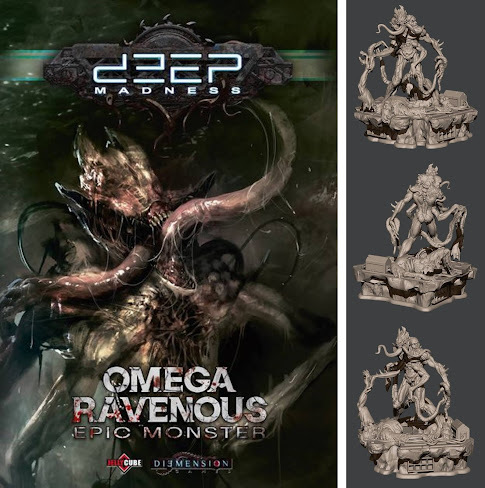
Game Overview for "Hunger Pains" (featuring Epic Monster Omega Ravenous)
Dome Three Mess Hall closed at 10 p.m.. It will not open to employees again until 4 a.m.. That is hours from now! Stomach growling, mouth salivating, head aching, you are starving. Who has hours to wait? In minutes, hunger promises to spark some desperate, preternatural urge to hunt. Recalling the Mess Hall has vending machines, you stride there boldly in pajamas. Slippers beat the vacated corridors, footsteps echoing over buzzing fluorescent lights.
The vaulted chamber of the Mess Hall rivals a gymnasium. Three trains of tables run parallel across the greater length. Each line has ten tables positioned end-to-end, and each table spans six feet. White linens adorn them. The Hall is devoid of life, as empty as your stomach. Where are those vending machines?
What’s this? The tabletops are not flat. Gossamer veils cover amorphous heaps. Perhaps the staff has prepared a special breakfast—the cloths must cover hundreds of chafing dishes. Who needs vending machines if there is a buffet available? Sudden abdominal cramps compel you to collapse. Crawling, while cradling a roiling tummy, you approach a table. Grasping for support, the cloth gets in the way. It’s not linen. Tugging on it more, a blanket-sized gauze pad spills onto the floor. Red gore streaks the shroud.
From the opposite end of the chamber, wet slaps demand attention. Peering around the endcap, a humanoid creature can be seen in the distance, its ribcage split open like a turned mouth, a tentacle-like tongue flapping from a malformed head. Red gore splatters as it mounts a table. It pays no attention to you. Whatever it is, it is hungry; and it has a carcass to eat.
Food! Swelling organs push against your ribcage, buckling the sternum. Pain lances through each rib as they strain. Rolling in the fetal position fails to alleviate the pressure. Your heart rate plummets abruptly. An aura of peace stills any panic. Four more beasts have joined the first. As the pack grows, any reluctance to rise wanes. Pain and mental resistance recedes.
Standing, the tabletop comes into view. Food is not on the menu. A splayed deceased miner lies supine and naked. A recent, unfinished autopsy left its raw internals exposed. This not a cafeteria table. This is a gurney. This is no Mess Hall, but a mortuary. How did you get here?
The ravenous creatures across the Mess Hall do not radiate fear now. Dozens feed in a cluster, focused and frenzied. As they aggregate, fear lessens. They do not appear like grotesque demons anymore. They are familiar and share a common hunger, an urge to consume. Succulent, human meat beckons. It looks delicious! You lean into the offerings. A cannibal is born.
“Intrusion Alert!” the intercom sounds as emergency lights strobe. “Dome Three, Level Two, Mess Hall. Alert!” A band of investigators armed with crowbars, axes, and utility knives breach the chamber interrupting the feast to attack…
August 10, 2021
Tribute to C. Dean Andersson
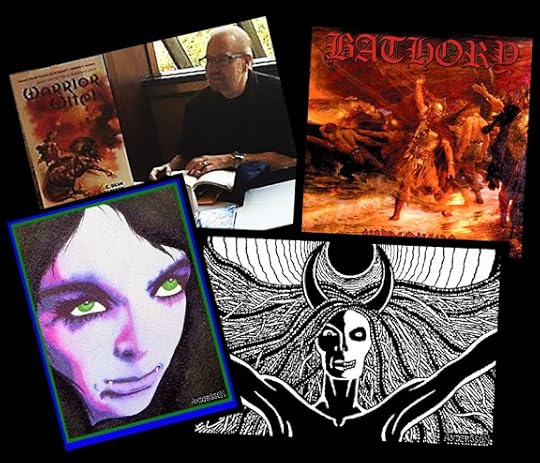
Black Gate Article Posted Regarding:
C. DEAN ANDERSSON TRIBUTE INTERVIEW
AND TOUR GUIDE OF HEL: BLOODSONG AND FREEDOM!
July 5th, 2021 marked the passing of CDean Andersson (a.k.a, Asa Drake). Christopher Fulbright (author, a journalist turned technical writer, and owner/webmaster of Realms of Night) posted a moving tribute this month online.
Andersson had his fame with both horror fans and the fantasy crowd for his Sword & Sorcery heroine Bloodsong.
This Black Gate post honors him by combining a review of his Bloodsong Saga (a.k.a. Hel Series) with a reposting of a 2014 interview regarding his creative process (with 3x illustrations he made to complement his written art, shared below).
We may never see the fourth installment (Valkyries in Hel)...sigh. Peace to C. Dean Andersson.
August 7, 2021
Ernst Haeckel interviewed about "Mystics"
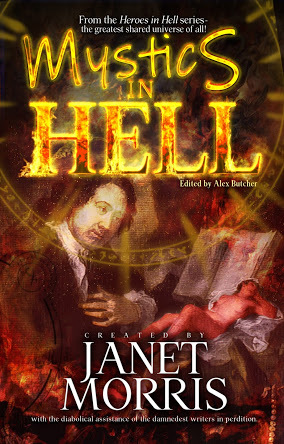
I have a guest post over in the Library of Erana, and it all supports the release of Mystics in Hell. Several authors will be posting author & character-perspective interviews for their contributions. My contribution is "Fool's Gold."
New to Hell? You may want to check out Joe Bonadonna's Black Gate article: PANIC AT THE INFERNO: MYSTICS IN HELL, PUBLISHED BY PERSEID PRESS that delves into this current collection.
There are formally >20 books in the satirical/dark-fantasy Heroes in Hell series, starting in 1986 and stalling in 1989 to be picked up again by author and champion Janet Morris. In 2011 she jumpstarted the series again with Lawyers in Hell. So Lawyers would serve as a natural starting point, but readers can jump in with any volume. Most readers select a book/theme that resonates with them. Each theme emphasizes historical events/characters. Mystics is appropriately full of religious zealots and devotion to deities.
Here is a link and teaser of what to expect in the guest post:Interviews from Hell – Ernst Haeckel/Seth Lindberg Aug 2021
Welcome to the Infernal Interview Service. Today we feature one of the characters and his writer from the acclaimed Heroes in Hell series. Ernst Haeckel (and his writer Seth) feature in Mystics in Hell.
What puts you above all the other self-proclaimed ‘mystics’ in Hell?
EH: Some consider me a mystic, but I am more of a scientist who searches for spiritual truths (I am certain you have read my treatise The Riddle of the Universe at the Close of the Nineteenth Century). Lately, I am wrapped up with mystics of the hierophant and alchemical type. See, there is a gold rush in hell! King Midas swallowed the Philosopher’s Stone and transmutes food into gold. He’s minting the promising new gastro-currency: buttcoin. I know, that sounds absurd, but the economy and nature of Hell is cruel. Anyway, the damned Forty-Niners are digging through excrement in attempts to get rich. The imprisoned Thoth, the Egyptian god of mysticism, has charged me to retrieve the Philosopher’s’ Stone. With it he can regain control of the afterlife, rescue me from Hell. So there is hope for me.
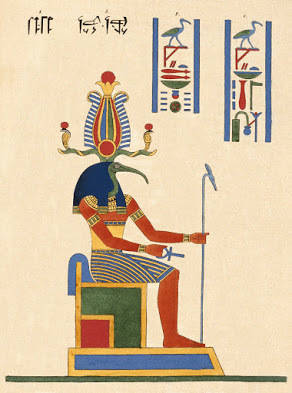 Thoth
Thoth
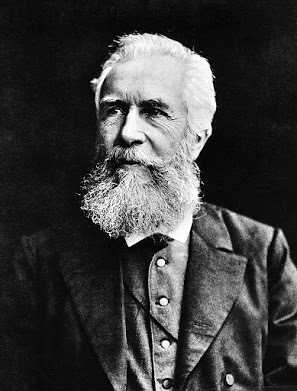 Ernst Haeckel
Ernst HaeckelAugust 2, 2021
The Green Knight Movie - review by SE
I just saw The Green Knight movie. The trailer was awesome. The reviews were promising..... but it was terrible. Beyond cinematics, it was not engaging, it was slow and incoherent. Sigh ..... stick with Excalibur (1980s), Clive Owen's "King Arthur", or even Guy Ritchie's Legend of the Sword. Well...there is always Monty Python's Holy Grail too.
Before I jump in, you may want to check out author Sean Poage's take. He is much more knowledgable than I am about the Gwain legends, having written one of his own too (The Retreat to Avalon, more on that below). Interestingly, he and his wife hit the movies as I did with mine (i.e., a post covid, first-time-back-to-movie-post-covid-wave-1 date). Here's his review of Gawain's legends and movie (link).
We are not treated to many Sword & Sorcery movies, let alone ones that promise some sense of intellectual content. So I was looking forward to this. As part of my grieving process.... I will go on a small rant.
Promises to be BrokenThe intro sets up very clear "rules of engagement" (as revealed in the trailer). The Green Knight challenges a knight to strike him, and a year later he will return the wound to the challenger. Gawain cuts off the Green Knight's head...and a year later must confront the Knight again (who survived).
Bait and Switch ConflictAlthough I am cool with a man-vs-self conflict..... the trailer, title, and beginning all promise a man-vs-man/creature (Gawain vs. Green Knight) conflict (which is not at the forefront). But let's say you get past that as you begin witnessing multiple, slow side-quests.
Incongruent Rules of the Game & Meaningless FluffThe visuals were awesome. The pace couldn't have been slower....which I would have been okay with if the "rules of the game" were followed. Remember the super clear rules of the beginning? To Heck with clear rules going forward. One could literally cut the entire middle ~1.5hrs out (anything between the initial and final Green Knight interactions) and not change the impact of the climax. Actually, I think I would have loved this movie if were only 30min long.
(below explains more with some obtuse/minor spoilers)Gawain has several important items (sash, ax, jingle-bell, and fox) to take on a journey to reach the Green Knight's location. He loses sight of said items, and they reappear and disappear in ways that are incongruent across ~3-4 side quests/challenges/tests. Did he earn them back? Just stumble across them? How/why did they come back to him? You should care. Gawain doesn't.
The handling of the "rules" didn't feel intentionally done to be mysterious or engaging. It felt like the producers stitched together a few different historical legends of Gawain's journey/tests, and they did not harmonize the meaning/rules across them.
Frankly, if the conflict is indeed "man-vs-self" then Gawain strangely doesn't really seem affected/changed....nor does he seem surprised that his key items come back to him for no clear purpose... and he doesn't even seem to be in denial or fretting about his impending duel. What seemed clear is that the ~3-4 side quests (~1.5hrs of the 2hr movie) were actually pointless (they did not build-up to the climax or develop the character) and they were also full of non-sequitur events.
The Retreat to AvalonSo what should we do about scratching the Arthurian Legen itch? Monty Python's Holy Grail would have us "Run Away, Run Away!" Well, I recommend retreating..... ie to read Sean Poage's "The Retreat to Avalon" which will likely leave you excited about Gawain and Arthurian legends! Sean Poage is an accomplished author with a knack for storytelling.
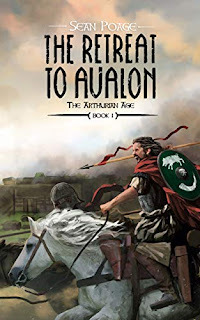
Book Blurb:
Fifteen hundred years have turned history into legend…
After three generations of struggle against ruthless invaders, Britain has finally clawed its way back within reach of peace and prosperity. Across the sea, Rome is crumbling under an onslaught of barbarian attacks, internal corruption and civil war. Desperate for allies, Rome’s last great emperor looks to Britain and the rising fame of her High King, Arthur.
Arthur believes the coming war is inevitable, but many are opposed. Dissent, intrigue and betrayal threaten to tear the fragile British alliance apart from within, while the enemies of Britain wait for the first sign of weakness.
Meanwhile, Gawain, a young warrior craving fame, is swept up in Arthur’s wake as the king raises an army. While Gawain’s wife and kin face their own struggles at home, the young warrior finds himself taking on more than he bargained for, and heading into the greatest battle his people have faced in generations.
The Retreat to Avalon is the exciting beginning of the historical fiction trilogy The Arthuian Age, introducing readers to the origins of King Arthur and the world he lived and fought for.
August 1, 2021
Worlds Beyond Worlds - Review by SE
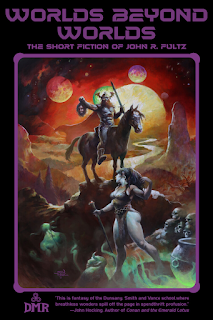 Worlds Beyond Worlds: The Short Fiction of John R. Fultz by John R. Fultz
Worlds Beyond Worlds: The Short Fiction of John R. Fultz by John R. FultzMy rating: 5 of 5 stars
Volume I: Transcending the Illusions of Modernity and Reason.: The first thing you must understand is that the One True World is not a figment of your imagination, and it does not lie in some faraway dimension. To help you understand the relationship between the True World and the False, you must envision the True World lying beneath the False, as a man can lay hidden beneath a blanket, or a woman’s true face can be hidden by an exquisite mask. (Fultz, “The Thirteen Texts of Arthyria” )
YOU WANT SOME OF THIS? The Brian LeBlanc cover of Worlds Beyond Worlds: The Short Fiction of John R. Fultz shows the revenant Chivaine displaying the trophy head of his enemy. As a reader, do you want to follow him? Challenge him? The tile and cover set up expectations well, so you can expect planetary landscapes, witches, twisted creatures, and villainous heroes. Worlds Beyond Worlds is exactly what it says, a collection that takes the reader/protagonists into other worlds which are beyond even stranger ones. You are invited to explore the beautiful darkness.
The mere fact Fultz can publish eleven tales across ten markets in just a few years is a testament to his skill. BTW, John R. Fultz is equally skilled in the novel form as he is in short stories; looking for a dose of weird adventure? Then consider The Shaper Trilogy or Tall Eagle series (listed below). He has a knack for blending genres/settings which reflects his desire to take the reader to new places, really weird new places full of disturbing surroundings and high-stakes adventure. Heck, there is even a Sword & Sorcery tale that harmonizes dragon killing with the ambiance of Kung Fu (dedicated to David Carradine's iconic role in the TV show). Anyway, if you crave unique fiction that conveys a wild experience, and are excited to immerse yourself in the cover's world, then the answer is: YES, YOU DO WANT THIS.
Learn more about John R. Fultz by perusing the author's website and by reading the 2017 interview where I cornered him on the topic "Beauty in Weird Fiction". You'll learn about the author's muses and illustration skills (which inform his visual style).
TABLE OF CONTENTS:
1. “Chivaine” originally appeared in Weirdbook #31 (2015).
2. “Yael of the Strings” originally appeared in Shattered Shields (2014).
3. “Ten Thousand Drops of Holy Blood” originally appeared in Skelos #3 (2017).
4. “Strange Days in Old Yandrissa” originally appeared in Orbit Short Fiction (2013).
5. “The Gnomes of Carrick County” originally appeared in Space & Time #116 (2010).
6. “The Thirteen Texts of Arthyria” originally appeared in Way of the Wizard (2010).
7. “Daughter of the Elk Goddess” originally appeared in Hyperborea (August 2014).
8. “The Penitence of the Blade” originally appeared in The Audient Void #2 (2016).
9. “Where the White Lotus Grows” originally appeared in Monk Punk (2011).
10. “Oorg” originally appeared in The Audient Void #5 (2018).
11. “Tears of the Elohim” originally appeared in Forbidden Futures #3 (2018).
WILD CHARACTERS: The protagonists are as varied as the milieus. “Chivaine” opens with an undead knight. “Yael” offers a reluctant bard turned hero on a battlefield with mega-insects; later stories feature the perspectives of a sentient sword (“Ten Thousand Drops of Holy Blood”), and we even get a bibliophile (“Thirteen Texts”) and a moon-born elder god (“Oorg”)! And there is more. You will travel the Land of the Scorpions, Valley of Sacred Bones, Eiglophian Mountains, the doomed city of Yandrissa, and through the underworld of the New World. Here is a taste:
"In the Land of Scorpions the warlock Vallicus kept a fortress of volcanic stone. Its ramparts rose above a realm of poisoned waters and crumbling ruins. Vallicus, like his citadel, was a relic of the elder ages. He had ruled a decadent kingdom in the time before the Hundred Gods tamed the world. How he longed for those ancient days of blood and slaughter. I was born into flames, falling out of the void. A womb of stone hurtling ever downward, until the thunder of impact fractured my shell. I lay among the glittering shards, formless and thoughtless, until Vallicus came for me. Weaving spells against the heat and flame, he carried me from the steaming crater. A silvery seed he would nurture and grow with sorcery. A nameless mineral to which he gave a form, a name, and a purpose." (“Ten Thousand Drops of Holy Blood”)
"There came a day when the rusted moon cracked open like an egg, and the giant Oorg fell screaming to earth. A pale and fetal meteor, his body slammed into the green ocean. Tidal waves and tsunamis swept the shattered continents, drowning empires and flooding the world. The world had flooded before, but there had never been a burden like Oorg for the earth to endure. He rose up from the steaming mud of the drained seabed, gleaming like a mountain white as snow. The light of his eyes was the glow of double suns, scouring the air with heat, scorching the low-hanging clouds to ash. The world roiled with cataclysms about his gargantuan feet, and he roared like an uncaged beast.
On the other side of the world Oorg explored the nature of his surroundings, howling at the red sky with his great maw, possessing no language to express whatever mundane or alien thoughts might be swimming in his vast brain. He knew hunger, and confusion, and cold. Inside the moon’s womb he had been warm and oblivious, dreaming of unguessed realities. Here he was titanic, pain-struck, and alone. He howled his pain like a hungry wolf and stomped across the ruined lands, his great arms tearing up islands and hurling them at nothing. " ("Oorg")
STYLE: Fultz's approach is reminiscent of Clark Ashton Smith's weirdness blended with Robert E. Howard's action. Expect bloody, weird bloody melee:
The men of Sharoc marched toward the overwhelming ranks of Ghothians. Diving griffons harried the rows of colossal arachnids. Knights drove their lances into the bulbous monsters. The spider-beasts squirted silvery ropes of webbing into the sky, bringing knights and griffons tumbling to earth. The Ghothian pikemen closed about the fallen ones, stabbing them to death in seconds.
The marching armies grew closer and closer. They would meet in the valley’s exact center. The spider-banners of Ghoth rippled in the autumn wind, and the yellow banners of Lion and Hawk streamed forth to meet them. At a certain distance the archers on either side took to ground. Volleys flew into the sky, each a black rain of barbed death. The footmen paused, sank to their knees, and raised their shields for shelter. When the arrows had fallen, the footmen rose and marched again. Another volley shot into the sky, and the footmen paused again and raised their shields. A soldier next to Yael took an arrow in the eye and died instantly.
Again and again the arrows fell, until the two armies came together in a rush of shouting, charging pikemen. Then all sense of ranks and order was lost, and the slaughter truly began. The wicked pikes of the Ghothians impaled their foes, ripped sideways to spill guts from bellies. Others hooked men into immobile positions of lasting pain. In such cases the Ghothians pulled forth their scimitars and took the heads of wounded men.
Yael might have dropped his pike and ran from the fray like a coward, but the press of men behind him made this impossible. So he marched into the forest of barbed and glittering blades aimed at his gut and face. The Ghothian pikes were grotesquely made, barbed and hooked to inflict maximum carnage. The screams grew louder. Dying men wailed and clutched at their spilled intestines on the ground as others trampled them into the mud.
…
Time had slowed so that each moment was an eternity. The roar of battle was like the roar of the ocean in Yael’s ears. Droplets of red blood spilled through the air like tiny jewels, splattered across the muddy ground. Dead boys lay all about him, their skulls and hearts and bellies split open, spilling the red secrets of existence into the black dirt. The whiteness of an ancient bone poked through the mud, a remnant of some historic battle. How many bones, how many skulls, filled the earth beneath this valley? The soil was rich with decayed humanity. (“Yael of the Strings” )
NOVELS by John R. Fultz/b>
The Shaper Trilogy
Seven Sorcerers
Seven Princes
Seven Kings



Tall Eagle Series
The Son of Tall Eagle
The Testament of Tall Eagle


View all my reviews
July 31, 2021
The Aesthetics of Sword & Sorcery: An Interview with Philip Emery

 The Shadow Cycles by Philip Emery (Immanion Press, August 2011)
The Shadow Cycles by Philip Emery (Immanion Press, August 2011)This continues our interviews on "Beauty in Weird Fiction" with previous topics being:
THE BEAUTY IN HORROR AND SADNESS: AN INTERVIEW with DARRELL SCHWEITZERTHE BEAUTIFUL AND THE REPELLENT: AN INTERVIEW with CHARLES A. GRAMLICHDISGUST AND DESIRE: AN INTERVIEW with ANNA SMITH SPARKACCESSIBLE DARK FANTASY: AN INTERVIEW with CAROL BERGGOD, DARKNESS, & WONDER: AN INTERVIEW with BYRON LEAVITTAre you haunted, perhaps obsessed, with Sword & Sorcery?Heroic fiction is infectious. Sometimes vicariously “being the hero” via reading is not enough to satisfy the call. Being compelled to write manifests next. Ghosts may be to blame. Robert E. Howard (1906-1936) is credited with originating the genre with his characters: Conan the Barbarian, King Kull, Solomon Kane, and Bran Mak Morn; in a 1933 correspondence to his friend and contemporary author, Clark Ashton Smith, Howard explained his interaction with the muse that inspired his Conan yarns.
'While I don't go so far as to believe that stories are inspired by actually existing spirits or powers… I have sometimes wondered if it were possible that unrecognized forces of the past or present--or even the future--work through the thought and actions of living men… the man Conan seemed to grow up in my mind without much labor on my part and immediately a stream of stories flowed off my pen--or rather off my typewriter--almost without effort on my part. I did not seem to be creating, but rather relating events that had occurred… The character took complete possession of my mind and crowded out everything else in the way of story-writing. When I deliberately tried to write something else, I couldn't do it.’
‘I do not attempt to explain this by esoteric or occult means, but the facts remain. I still write of Conan more powerfully and with more understanding than any of my other characters. But the time will probably come when I will suddenly find myself unable to write convincingly of him at all. This has happened in the past with nearly all my rather numerous characters; suddenly I find myself out of contact with the conception, as if the man himself had been standing at my shoulder directing my efforts, and had suddenly turned and gone away, leaving me to search for another character.'
[Lord, G. (1976). The Last Celt: A Bio-Bibliography of Robert Ervin Howard. Hampton Falls, NH, Donald M. Grant Publisher, Inc., p57]
S&S has evolved over the last century. REH’s spirit, or the phantoms that plagued him, have inspired, or haunted, countless others. New voices and characters have broadened the scope, like Karl Edward Wagner’s Kane or Michael Moorcock’s Elric—perhaps even spawning contemporary Grimdark. Answering “what is” and “what is not” S&S is philosophically entertaining, but the scope of contagion is not the primary topic here. This is about the fans/victims who are infected by REH. Severely stricken artists, like Phil Emery, become so obsessed they go beyond writing S&S and write a doctoral thesis on REH’s writing (Revivifying The Ur-Text: A Reconstruction of Sword-&-Sorcery as a Literary Form; Loughborough University, 2019).
The Case of Philip EmeryLet us consider the case of Philip Emery (whose condition resembles the afflictions/abilities of Lovecraft’s Charles Dexter Ward and Richard Upton Pickman). Emery’s passion for expanding S&S is a wonderful journey, and his work is worth studying as well as reading for pleasure.

He lives just outside Newcastle-under-Lyme, on the outskirts of the Potteries (United Kingdom). He works as a freelance writer/lecturer, teaching creative writing for various universities, colleges, and educational organizations, and was an associate lecturer with Keele University for over twenty years. I first learned of his work Return of the Sword via Rogue Blade Entertainment’s Demons: A Clash of Steel Anthology, in which Emery’s "Fifteen Breaths" had a poetic, dreamy-weird style to it. Crossed his work again in RBE’s Return of the Sword and was completely taken with his "The Last Scream of Carnage" (notably the editor's pick). It was again poetic and pushed the bounds of the genre. His gothic, steampunk novel. Necromantra was very enjoyable (reminiscent of Brian McNaughton’s style in the infamous The Throne of Bones--just replace McNaughton’s focus on “ghoul erotica” with “thaumaturgic conjuring”). Recently he published "Seven Thrones" in Parallel Universe Publications' Swords & Sorceries: Tales of Heroic Fantasy Volume 2.
Emery’s experimental Sword & Sorcery adventure The Shadow Cycles (2011, Immanion Press) featured weird, poetic Sword & Sorcery. Now out-of-print, there is a possibility of a second edition with new material from Jason Waltz’s ambitious and innovative Rogue Blades Foundation publishing project at some point in the future. Waltz colorfully captures his emotions after reading Emery’s work:
“Wow. Well now that was quite the read, Phil. I am all at once congratulatory-confused-challenged. Point me to the nearest windmill and shout 'Beware!” Jason M Waltz, RBE/RBF
Indeed, Emery’s writing is mind-bending. If you have not read it before, prepare to be mesmerized (or even infected). Emery’s The Shadow Cycles present a milieu in which all the suns/planets were flooded/swallowed by a tangible shadow, and magical forces allow limited teleportation from other realms to steer the fate of two remaining serpents which serve as vessels for humanoids: one, a petrified, floating dragon; and two, a leviathan on life-support. The latter is a wondrous, horrific landscape in which humans live in arteries filled with “tallow warts” and resonating with “meat echoes.” A few excerpts showcase his style:
“Again there is a different cold. Bleak. Vast. Filled with moans. The chamber stretches into the distance, and throughout that length, hanging from the vaulty ceiling, are the same fleshy stalactites that strew the labyrinths. Except these are longer. And from them hang bare bodies. Men. Women. Children. Moaning.”
“The tendril-things curl around their necks, holding them just above the floor. Others meander among them. Gazing up at them. Nudging them so that they turn slightly. Pinching them. Considering. Because these tendrils, unlike human umbilical cords, not only nourish but leach. They give life to the suspended ones but at the same time soften tissue, suck bone brittle – until the time is right.”
“Leviathan moves on through the wakeless sea and the dragonreme slips down its flank. Across its leagues of back a spine of bony spikes stab out. On each spike is impaled a torn, livid body, an oriflamme of skin and sinew. The spike bores through the small of the back and up through the belly, bowing the body. Arms and legs loll down but not their heads. There are no heads.”
Phil Emery is a natural fit for our interviews on the topic of “Art & Beauty in Weird Fantasy.” Let’s tap his mind on the aesthetics of S&S.
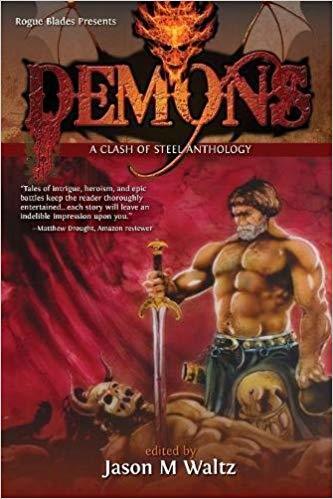
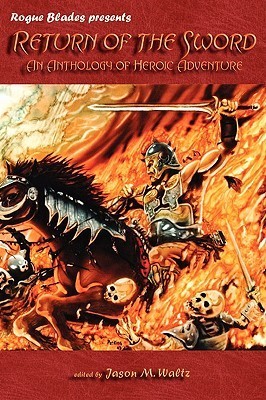 SEL #1: You have written on the evolution of Sword & Sorcery, summarizing its status:
SEL #1: You have written on the evolution of Sword & Sorcery, summarizing its status: How S&S is evolving in the 2020's? Any thoughts on the Grimdark craze?“From the early 1980s until the late 1990s the genre or sub-genre known as sword-&-sorcery was largely moribund. The Tolkien-derived high fantasy novel, on the other hand, flourished and mutated into six, eight, ten-volume, or open-ended series. Even though the terms high fantasy and sword-&-sorcery are sometimes used interchangeably, sword-&-sorcery came to be viewed as an inferior, cruder form: rougher in style, more limited structurally, stunted in terms of character development, even morally questionable (rather than ambiguous)."
PE: I suspect that how S&S is evolving is partly dependent on whether you see Grimdark as S&S. I recall a lengthy discussion on the Goodreads S&S forum a few years ago which touched on this. Certainly Grimdark recruits and amplifies some elements of Robert E. Howard’s aesthetic in depicting physical violence and certainly there’s the seeds of the moral ambiguity found in Grimdark in REH’s S&S – and there’s little doubt that if REH was writing now, and writing fantasy now, he’d probably be all over Grimdark. But...
Differing aesthetics can be seen simply as ways of being – or ways of dealing with the real world in such a way as to give it meaning – Japanese samurai and the medieval knight by all accounts had very developed aesthetics with elements of the metaphysical. Albeit their real lives were hard, bloody and almost always short, they had an access to an ideal which gave those lives, that reality, a kind of beauty. I’ve no problem with dark, no problem at all – and not much with grim for that matter. It’s more a matter of the kind of grim. A lot of Grimdark seems to emphasize the grim. A fashionable term at the moment is ‘dirty medievalism’: as in dirt, squalor, etc., equals realism. Or naturalism, maybe.
There doesn’t seem to be much of an element that Howard’s aesthetic contained: romanticism. And where gritty naturalism takes precedence can there still be a place for romanticism? Steve Eng notes that ‘an overriding mood in Howard’s poetry is one of romanticism.’ And Edward Waterman has commented on Howard’s affinity for romanticism. In fact it’s possibly the combination of romantic and Gothic influences, themselves historically linked, filtered through Howard’s highly personal if ostensibly commercial approach to writing which shaped his S&S.
I think that the trend toward naturalism and away from Howard’s romanticized aesthetic began even as early as Fritz Leiber’s Fafhrd and Grey Mouser stories, stories with more ‘human’ protagonists. It seems to me that this trend’s become ubiquitous in twenty-first century sword-&-sorcery and fantasy and represents part of a general migration away from alterity.
But, to reiterate again, perhaps the most important characteristic claimed for Grimdark is a marginalizing of the supernatural element. It seems not so much that the numinous is deployed sparingly (not necessarily a bad thing) but that it’s sidelined as just one story element among many, in favour of psychological complexity of character and realistically graphic violence.
All of which probably only partially answers your question about evolution – but I do wonder if the Grimdark tsunami couldn’t be compared with the cyberpunk explosion in the eighties. Eventually, its characteristics were assimilated into mainstream science fiction. Might be that will happen with Grimdark and S&S. Of course, this analogy is complicated by all kinds of literary and publishing and other nuances... Analogies always fall apart in the end...
 SEL #2: You have a chapter dedicated on “Robert E. Howard’s Aesthetic of Violence.” Please summarize of what you learned. Pick an excerpt to discuss. Do you share REH’s aesthetic?
SEL #2: You have a chapter dedicated on “Robert E. Howard’s Aesthetic of Violence.” Please summarize of what you learned. Pick an excerpt to discuss. Do you share REH’s aesthetic?PE: Okay, you asked for it:
My preparation for writing The Shadow Cycles was to identify via two approaches essential elements in Robert E. Howard’s original sword-&-sorcery form. My intention was to set down a number of conceptual motifs partly through an instinctual or experiential method based on decades reading the form, and partly through a more formally analytical one based on that same reading but informed by literary critical knowledge I did not have when I first encountered it. In this way thirteen motifs were arrived at by the conflation of personal and critical perspectives. As I wrote TSC their non-definitive wording allowed me to view them as ‘live’ and ‘evolving’ rather than clearly-defined conclusions. These were:
Sword-&-sorcery is intense. All else is subjugated to this effectSword-&-sorcery is potentially amoralSword-&-sorcery is the combination of violence and the numinous: a double-helix of violences which entwine around intensitySword-&-sorcery eschews explicit development of milieu or character or conceptSword-&-sorcery is generally naturally a short story formSword-&-sorcery contains an element of deathwish in its sensibilitySword-&-sorcery has a Chthonic sensibilitySword-&-sorcery has a potential element of tragedy in its sensibilitySword-&-sorcery combines explicit and implicit horrorThe Sword-&-sorcery protagonist is a loner - a figure apart or otherSword-&-sorcery addresses the irrational through the very fact of its connection with the numinous effectSword-&-sorcery is about powerSword-&-sorcery is highly 'visual' (either through the presence or the absence of the visual).So there it is: my ‘tarot’ of Howardian S&S. You might characterize tarot reading as intuition facilitated by symbol – visual symbolism in the cards, verbal symbolism in my thirteen motifs.
This would be some kind of epic interview if I was to go through my thoughts on each of the thirteen. But as an example, the double-helix mentioned refers to characterizing REH’s way of depicting violence into physical violence or kinetic violence, emotional or potential violence (the berserker rage his protagonists tend to experience conflates the kinetic and the emotional), and stylistic violence, in respect of Howard simply the power of his prose or poetry. The second strand of the helix refers to the ideas of the theologian Rudolph Otto, who broke the effect of the numinous into three components, which he collectively names the ‘mysterium tremendum’, these being ‘overpoweringness’, ‘energy’ or ‘urgency’, and ‘awefulness’ or ‘unapproachability’. My argument is that Howard’s most powerful sword-&-sorcery incorporates all three of these elements and that the stories which lack any of the three are less effective. It might even be said that these elements mirror the three Howardian technical violences. In fact, there’s an amplification of my thoughts on this in an essay entitled ‘The Problem of Tuzun Thune’ currently under consideration at The Dark Man.
Those thirteen motifs are still evolving for me – and because they’re couched in vague terms, someone could take them, interpret them differently, and produce S&S of an entirely different kind to The Shadow Cycles which would be just as ‘true’ to my perceived essentials of the Howardian form. They’re as much about what S&S might be as what it is. I hope to have a section called ‘Motifs of Storm and Shadow’ in any new edition which continues the process in a conflation of critical and creative elements. Actually I tried to do something more along those lines in the PhD thesis – that is tried to make it more akin to a metaphor than a simile, make the critical and creative parts more intimately connected – the critical is, after all, to my way of thinking, just another type of creativity...

But my long-suffering supervisors often reined me in when my artistic audacity (or idiocy?) threatened to take over...
Around the same time, I wrote an essay which went more into the nuts and bolts of Howard’s prose style, entitled ‘Berserker Synecdoche: Howard’s Aesthetic of Violence’. This identified a set of techniques that favoured a tendency to sequence descriptive passages in a surprisingly consistent order, that order being general to poetic to specific and back to general imagery, and also argued that he tended to place such details in ‘relief’ above a vaguer background. (Take a look at those iconic Frazetta pictures – he employs the visual equivalent of this technique.) In his approach to describing the supernatural, I also noted that he’d sometimes use a kind of ‘virtual simile’ that conveyed emotion rather than visual precision. "She saw a great toad-like face, the features of which were as dim and unstable as those of a specter seen in a mirror of nightmare", for example. (That’s from ‘Xuthal of the Dusk’. Remember my tarot motif, “Sword-&-sorcery is highly 'visual' (either through the presence or the absence of the visual”? You’ll find instances of this in kind of thing in The Shadow Cycles.) Howard’s technique seems to be remarkably varied and flexible and possibly only held together by his instinctive storytelling instinct. The essay was published in the 25th anniversary issue of The Dark Man Journal of Howard Studies. I’ve published pieces there before – really just as a way of saying thank-you to a writer who’s given me tremendous pleasure over the years.
Do I share his aesthetic? Put it this way: I think I’m in touch with it.
SEL #3: Your thesis is not just an overview of S&S, it also lays out your plan to renew the genre. How are you motivated to reshape S&S’s future?PE: Oh dear. That comment about redefining the form at the beginning of the ‘Storm of Shadow’ essay appendixing the original Shadow Cycles edition! It was written some twenty years ago, long before the current resurgence of S&S, and certainly well before ‘Game of Thrones’ was a twinkle in Sky Atlantic’s eye.
This was before the green shoots of the revival began to appear, possibly a year or so later with the publication of Mike Chinn’s ‘Swords Against the Millennium’ anthology. But I still think, mind you, that the revisioning I set about was necessary for me as a writer. I’d felt the weight of my fantasy reading years was resulting in an object case of that old ‘law of diminishing returns’. The potential pitfall of ‘been there-read that’ is particularly tricky for fantasy genres where otherness is a crucial stock-in-trade. So any impression that I set out to single-handedly rescue or reshape S&S should be put to the sword – or maybe I should be too. I did, however want to bring a literary angle to proceedings. I’ve always read literary as well as so-called genre work, particularly the more experimental end of things, which tend more toward a ‘writerly’ rather than a ‘readerly’ approach – in other words asking the reader to work a little harder.
There never was a S&S equivalent to SF’s sixties new wave, and I feel that that kind of acceptance of experimentation isn’t so great these days. (How I’d have liked to see Burroughs (William) and even better Kathy Acker take on S&S.) I attended a writers workshop in London many years ago taught by Algis Budrys, and one piece of advice he gave was that no matter how well ploughed the generic field you’re ploughing, always try for something extra – something fresh. Always give the work your best effort. Push that damn envelope. It’s a sentiment echoed by the novelist and screenwriter William Goldman in his memoir ‘Adventures in the Screen Trade’. And believe it or not, I do get inspired by some of the ideas to be found in literary theory. In fact it’s technical challenge that tends to motivate me more than anything. I once wrote a story concerning a blind and deaf ‘Samurai’ and the challenge of telling the tale from his view-less-point was what most interested me. (‘Nightdweller’ appeared in ‘Abyss and Apex’ web magazine and then in my Immanion Press collection ‘The Celt in the Machine’. One of the meanings of that title is throwing a spanner into the works of orthodoxy – a celt being an ancient kind of, well, spanner.)
So there was no grand barbaric ambition to ‘come hither and tread the jaded genres of the earth beneath my postmodernist feet’... Fun as that would be... Just the intention to write as best I can and prod the occasional envelope along the way. (I remember when ‘The Last Scream of Carnage’, a kind of oblique prototype of TSC was published: one review commented, “the most impressive thing to me is that the story exists”. I liked that.)
SEL#4: Do you consult or perform tarot readings? Ever draw/design your own tarot cards? Are you inspired by Tarot card art?PE: I certainly learned how to lay out and read a tarot spread when I was writing TSC. But I’ve already covered some of the connections of the tarot to The Shadow Cycles above, so perhaps I can here talk about some of the other ways I find a use for it?
Early in The Shadow Cycles, Sstheness uses a kind of tarot pack to predict the arrival of the Phoenix Prey – an early signalling of a suggested tarot card reading dynamic for the story. Each chapter or scene might be thought of as one card - one unit. Reading a tarot layout has similarities to reading a story, generic or otherwise. In TSC significance is not always handed to the reader overtly, but needs to be interpreted. So the tarot provides a useful metaphor for a reader interpreting or filling in gaps of plot or character motivation or missing generic elements. And as I’ve said it implicitly licenses the reader to dwell on individual cards/narrative units more than might be the case in more conventional fiction reading. Not every story can be read at expresso-speed, and the necessity to slow down and ‘smell the narrative coffee’ isn’t necessarily a fault in the writing. The taut sentence/clause/phrase style of TSC adds extra emphasis to this appeal to a more considered reading tempo, as are the measured focus on moment-by-moment and the degree of choral-style repetition.
All this is admittedly simply an extension of existing narrative techniques. In fact an example exists in the Howard story ‘Black Colossus’. In a long paragraph Howard introduces princess Yasmela with a typical prose-poem style general description before focusing in on a precise and ominous moment in time. Only in the following paragraph is the ‘shapeless shadow’ which menaces her revealed. The sequence builds slowly, layering on detail after detail.
One thing I mention in the thesis is TSC’s attempt to ‘convert understanding into effect or resonance rather than communication’ – it’s another try at moving the emphasis away from plot – which is not to say I gratuitously tried to confuse the reader. In fact, I went to considerable lengths to offer good traditional storytelling aid. As an example, take the battle scene on the galleys where most of the principle characters meet. So, four or five characters to keep track of in a chaotic scene, albeit I had introduced each of them separately earlier:
They’re all afraid; the oarcrew; the Sword-Mariners, men and women in jerkins and breeks of tight otherworldly mail; the oarsmasters, one to each ship; the helm, one to each ship’s rudder-vanes; even the navigators. But the fear of the first ones who turn and look up is different from the fear of the others. It beckons their eyes. Then the first cries and mutters of astonishment and awe go out and all the rest of them, every last one on every ship, looks up.
A flame flickers down between the stars, arcing and falling, a blue coma waked by red and white and yellow flurry.
The first choice of the Phoenix.
Some of the Sword-Mariners of the first dragonreme to reach him send down a rope and haul him up out of the sea. It takes seven, nine to pull him aboard. A cuirassed giant. Dark-maned. Taller and wider than any Mariner. And the scabbard at his side holds a sword twice the length of their own, even if it had not been straight but arced like theirs. Its pommel is a smooth, perfectly round ruby.
He rests on hands and knees on the deck for a moment, breathing deep. He pulls the great white pelt on his back more firmly across his shoulders and stands.
The first of the five to plunge out of the sky.
This is Gemmored, the swordsman.
I don’t even name him here, but those key physical details: the size, the mane, the sword, the white bear pelt, hopefully jog the reader’s memory. It’s an old, old technique: Homer uses it in The Illiad – key phrases or details, epithets which help his audience keep track. And this is a book – the reader has control just like someone doing a tarot reading. Both can pause, go back, consider. This is one of the ways TSC utilizes the tarot connection, probably the most significant use: structural – there’s license to pause and recap much more than a mainstream contemporary novel tends to give. Some will object to that kind of license, that particular ‘celt’ thrown into the works of orthodox storytelling ‘good practice’. But the reading process can be demanding and complex even for the most straightforward of prose. Robert Graves’ book The Reader Over Your Shoulder, albeit a little dated now, anatomizes this thoroughly. You could say that I’m simply acknowledging and using this.
Of course a move away from plot compromises the usual levers of expectation and anticipation, but the overall premise of a group of characters recruited Seven Samurai / Magnificent Seven style to aid in fighting a war, and the looming nature of that war I hope compensates to some degree. Often writing decisions are more ‘swings and roundabouts’ than hard rights and wrongs. I think that there’s a useful distinction to be made between premise and plot – both’re straight-forward enough in TSC to hopefully allow more attention to rest with the style or effect without entirely losing track of both the former two. TSC is almost entirely chronological.
SEL #5: Despite your admiration for Howard’s works, to me, your poetic style seems more reminiscent of REH’s contemporary: Clark Ashton Smith. In a 1930 letter to H.P. Lovecraft, CAS described his strategy of using aesthetics to heighten the reading experience of his weird works:Comment on the differences between CAS weird-S&S vs. REH’s approach, and how cadence can be employed to affect beauty or horror?“My own conscious ideal has been to delude the reader into accepting an impossibility, or series of impossibilities, by means of a sort of verbal black magic, in the achievement of which I make use of prose-rhythm, metaphor, simile, tone-color, counter-point, and other stylistic resources, like a sort of incantation.”
PE: On CAS, for whom I know we share a great admiration: my diction is much less Latinate than Smith’s. Certainly, The Shadow Cycles’ prose is sonorous and rhythmical, but the cadences are (deliberately) much less smooth than Smith’s. The complexity of some of my sentences owes more to my pushing at the visual potential of S&S – a slight extension or ‘weighting’ of detail. (Just slight in the main – though I did consider early on having an entire chapter consisting solely of naming all the precious stones in the roof of Dragonkeep...) I appreciate that the reader needs to acclimatize to the style, but hopefully no more than someone reading an eighteenth or nineteenth century novel has to. The style of TSC isn’t intended to pastiche, or worse parody either Smith or Howard. I was going for something much more subtle: using those tarot motifs, those units of Howardian sensibility, as a launching point to develop a style that embodied those original S&S sensibilities. So you don’t find Howardian pace or Smithian flow in TSC – but I do think my rhythms and pronounced focus in The Shadow Cycles prose achieved almost a ‘holophrastic’ effect here and there, as if the whole book might be present in an individual sentence?
This attempt at concentration is actually mirrored within the story when it’s revealed that a gesture or a single act or even a word uttered or not uttered might decide the outcome of the war. If a reader picks up on this then everything that happens after this point has a potential significance beyond itself. None of this duplicates the Howardian brand of intensity, but I hope it ‘echoes’ it in its own way. And both REH and CAS worked largely with short fiction – due to its length, The Shadow Cycles has a variety of cadences – even within the Nightmare Cadre dream sequence written in pseudo-verse the different characters have different rhythms which mirror their personalities. I aimed for a style that was neither modern nor archaic, but suggested both. For me there’s nothing that kills otherness in fantasy more stone-dead than modern slang; that general push toward naturalism, I suppose.
Regardless, I certainly feel TSC is the culmination of my decades of writing. The history of The Shadow Cycles in its various versions is too convoluted to go into. But the original doctoral-intended Shadow Cycles was actually my first book but the one I wrote second! The whole Shadow Cycles project had been in my mind since the early seventies, characters, plots, imagery, etc. Yet I knew I hadn’t the ability to tackle it then. I think that most writers who begin young have all the creative energy in the world, but that dwindles over time – whereas in compensation experience builds on experience. There comes a time, and the writer recognizes it, when those two elements come into a balance and that’s when their best work happens. So I wrote Necromantra first in preparation for that balance.

You asked about the differences between the Howard approach and the Smith approach. I suppose we should first explain that I recognize not one kind of S&S but several. There’s Howard’s Ur-text, the hard-driving vivid gothic adventure kind with hardy powerful protagonists confronting the supernatural which set the agenda. Next came the Howardian Epigones who followed closely in his wake, then what I call Neo-S&S which developed the ‘tarot’. Fritz Leiber with his Fafhrd and Gray Mouser tales would probably be the first and one of the best known of this ilk, notably adding irony to the mix. Clark Ashton Smith is probably who comes most strongly to mind when I come to my category of Weird-S&S. Though Dunsany pre-dates him.
Weird-S&S is a kind of S&S that shares the irony of the Neo category, but usually its protagonists are by no means extraordinary physical specimens – in fact often they don’t survive the stories they feature in. And another difference is, certainly as regards Clark Ashton Smith, less of a concern with plot and more with a more poetic register of language. (It’s probably the most direct instance of creating beauty-in-horror; although I’d say that any well-crafted depiction of horror or the horrific is a thing of beauty – the definition of beauty being another envelope I’d want to push.) These categories are no doubt contentious to some, but they’ve helpfully informed my own S&S. They help me zero in on what I’m trying to do with any particular project. I’d definitely put my ‘Arabesques from the Edge of Time’ sequence and my ‘Geis and Trolls’ stories in the weird-S&S bracket.
SEL #6: Similarly, how can one craft poetry (or abstract prose) to be awe-inspiring (truly magical) yet remain accessible (too weird)?PE: Can you be too weird?
Seriously, I think we’re back to the balance between communication and effect. More than once I’ve read Dunsany’s The King of Elfland’s Daughter and ‘lost’ myself in those cadences. I’ve reached the bottom of a page and thought: “hold on, what happened on that page? I’ll need to look back and check. But this is Dunsany – I’ll be inclined to forgive him just about anything. (Mind you, is this something that requires forgiveness?) The same with Greer Gillman, or the later Alan Garner (particularly ‘Red Shift’). It’s easy to lose plot, so a balance is always sought for narrative fiction. Formal metered narrative verse does tend to edge a reader closer to a concentration on effect rather than plot, but only slightly. The Rhyme of the Ancient Mariner is a piece that seems almost to poise itself fifty-fifty, helped by the straight-forwardness of the premise I suspect. I think.
Ballads in particular seem to touch on something elemental in the reader but are grounded in plot. Even a much larger narrative verse such as Glynn Maxwell’s haunting ‘Time’s Fool’, several hundred pages of terza rima modernizing the Flying Dutchman story, has to find a balance. I think Samuel Delany in ‘The Jewel-Hinged Jaw’ argues that there’s really no such thing as a division of form and content. How you write something is part of what it is. So if the magical effect is accessible in that it has an effect, perhaps that’s enough. I also think that for something to be profoundly numinous it needs some degree of Otto’s ‘unapproachable’ – surely it can’t be fully known and still weird? I believe the magic lies in the gaps – the writer’s art is to ‘scaffold’ those gaps, cast the right shadows...
SEL #7: CAS was a poet, illustrator, and sculptor; many others interviewed on this topic of “Beauty in Weird Fantasy” have other artistic talents beyond writing. Do you practice other arts (necromancy counts)? If so, can we share them (i.e., images of fine or graphic art) or mp3s (of music). If not, which artists/pieces inspire you to write?PE: I pretty much concentrate on the writing – but I do spread myself pretty wide. Besides prose fiction and verse and non-fiction, I write playscripts and graphic novel scripts. I’m presently working on a number of graphic novels with a tremendously talented artist, Toe Keen, based in Spain. And a live Zoom readthrough of an absurdist black comedy, ‘Decaying Circle’, took place in May.
SEL#8: Any new works you can discuss? More Shadow Cycles?PE: “Never shares a big bed with once,” opines the Gray Mouser in “Trapped in the Sea of Stars” – but I probably won’t return to The Shadow Cycles directly, and can’t imagine writing anything quite so layered and allusive and ambitious again – the completion of TSC signaled a new stage of my writing life where I’m now writing what I want to, not what I need to. But the agenda developed in writing the book and the thesis will inform the aesthetics of much of my future sword-&-sorcery* A short story, ‘Twilight’s Four’, presently without a home, focuses on the tarot motif “Sword-&-sorcery addresses the irrational through the very fact of its connection with the numinous effect” – in other words madness.
There’s a series entitled ‘Knights Incognitus’ the first story of which was scheduled for Rogue Blades’ aborted ‘Assassins’ anthology – but that’s more science fantasy than full-on S&S. There’s also a series called ‘Jack o’ Wraiths’, capitalizing on my fondness for the British folktale, but again too gentle to be properly called S&S. However I’ve begun work on a series of shorts under the collective title of ‘Unsheathings’, playing on the warrior-poet trope, which is probably the closest thing to that Howardian Ur-text. (Friends of mine highly qualified in Iaido, the Japanese art of sword drawing, are giving me a little basic training as part of my research.) The ‘Seven Thrones’ in the recently published second volume Swords & Sorceries anthology from Parallel Universe is one of theseAnd while I did say I wouldn’t be returning to The Shadow Cycles directly, I do happen to have something like twenty-five thousand words of notes left over from that thesis which I’m reworking into a verse-essay along the lines of Alexander Pope’s verse essays – but without the heroic couplets. I refer the reader back to my earlier comment about audacity and idiocy...
S.E. Lindberg resides near Cincinnati, Ohio working as a microscopist by day. Two decades of practicing chemistry, combined with a passion for the Sword & Sorcery genre, spurs him to write adventure fictionalizing the alchemical humors (under the banner Dyscrasia Fiction). With Perseid Press , he writes weird tales in the same bloody vein (Heroika and Heroes in Hell series). He co-moderates the Sword & Sorcery group on Goodreads , and invites all to participate. He enjoys studying Aikido and creates all sorts of fine art in the family workshop.
July 26, 2021
Forging Independence
Another Dyscrasia Fiction short story has been published, this time in Swords & Sorcery Magazine's July 2021 edition. "Forging Independence" focuses on Doctor Grave's struggle to raise daughters in the Underworld. Have a look. It's free to read online.
Forging Independence (2021) Swords & Sorcery Magazine Issue 114, July 2021This story follows "Raising Daughters" published late last year in Whetstone:Raising Daughters (2020) PG - appears in Whetstone #2 S&S Magazine also read for free!
More stories are to come via various outlets, I hope.
Sept-Oct Groupread Topic Poll is up



Leigh Brackett, with a focus on Skaith Books: The Ginger StarThe Hounds of SkaithThe Reavers of Skaith



C. Dean Andersson tribute (recently deceased), with a focus on Bloodsong: Warrior Witch of Hel, Warrior Rebel (Bloodsong Saga, v.2), Death Riders of Hel



REH-Character Pastiche: Conan one's like Conan the Rebel, Conan: Sword of Skelos Conan and the Emerald Lotus....OR.... any of Offutt's Cormac Mac Art....Ramsey Campbell's Solomon Kane, etc.comments and details· show results· invite friends
Belgian Coke Oven and Vinton Furnace 2021 - Ohio Ruins
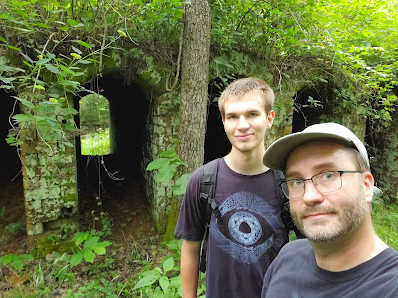
While our kids were young, my wife and I toured many of the Native American ("aka Indian") mounds across Ohio (Serpent Mound, Mound City, Seip Mound...many more) we stumbled upon ruins of the past industry (~Civil War era) such as the Hope Furnace. This led to the desire to seek out other lost edifices and has inspired some of my writing (ie Clan Tonn in the Dyscrasia Fiction universe). For more on the history of iron furnaces in OH, I recommend:
Old History Ohio (Vinton)
Olde Forester.com (Vinton)
So I learned about this gem of a site called Vinton Furnance, which is accessible but off the beaten track. There are two key features at this location: one, the Belgian Coke Furnaces used to turn coal into coke fuel used for the blast furnace, and two, the huge Vinton blast furnace used to extract iron from ore.
Vinton Furnace operated from 1854 to 1883. In 1875 the charcoal-fired Vinton Furnace was converted to use coke for fuel. The unique feature of the Vinton Furnace is the set of 24 Belgian coke ovens. The battery of ovens was used to process coal into the coke, which was then was used to fire the furnaces. Due to the local coal's high-sulfur content, efforts to produce coke capable of firing the iron furnace failed. Coal had to be brought in by railroad to produce satisfactory coke. (from https://ohiodnr.gov/wps/portal/gov/odnr/go-and-do/plan-a-visit/find-a-property/belgian-coke-oven-ruins)1) Belgian Coke Furnace (used to turn coal in coke fuel needed for the blast furnace)
(from http://www.oldeforester.com/Vinton.htm#Belgian ) The following is a copy of a newspaper report dated 11/25/1875 which Lawrence McWhorter, Hamden, OH, found in the Democratic Inquirer archives. He recognized its historical importance in the Iron Industry of The Hanging Rock Iron Region.....The article was written at the opening of the coke plant and at the time the new process was thought to be successful. Unfortunately, the local coal proved to be too high in sulphur content and couldn't be used....The article originally appeared in the Cincinnati Gazette and was written by a technical writer.
"The coal is ordinary hill coal of this region, and found from eighteen to twenty feet below the limestone ore. This is taken first to the crusher, where it is broken up into small pieces of a size to permit them passing through a screen of about five-eights mesh. It is then elevated and passed through the screen, from which it passes to the ‘Separator.’ This is simply a sieve working up and down in water, and by this process the whole of the slate and sulfur in the coal (being of greater specific gravity than the coal) sinks to the bottom of the sieve, and passes out there, while the clean coal flows out over the top and is carried to bins where it is left to drain off its water and dry sufficiently to go into the ovens. From these bins it is taken in iron cars right out upon the top of the ovens and drops into them through holes made for that purpose. When coked for thirty-six to forty-eight hours it is pushed from the ovens in a solid mass or plug and extinguished by a stream of water poured upon it and it is then ready for use. These ovens are of the Belgian type, and twenty four in number, standing side by side in a row or battery. On one side is the coke floor, upon which the coke is discharged when coked sufficiently. Upon the other side stands a pushing engine, which runs upon a track the whole length of the ovens, and from which when the ovens are opened there issues a huge plunger, which passes entirely through the ovens and shoves the m ass of coke out upon the other side, thus dispensing with the use of men and rakes to empty them, and discharging and filling an oven in about three minutes. The ovens themselves are simply rectangular tubes of fire brick, twenty-two feet long, three feet wide and six feet high, with cast iron doors at each end. Above, below and around each however, runs a system of flues through which are carried the gases evolved in coking, and which are thus utilized in creating greater heat for this purpose."

2) The Vinton Blast Furnace (used to melt iron ore and produce pig iron)
Quote about its history and image below from Olde Forester.com:
Vinton furnace was placed in blast in 1854. Mr. Culbertson of the original company soon retired for in 1859 the firm was Means, Clark and Company. At this time Cyrus Newkirk was manager of the works. The original stack was 11 feet across the boshes, 32 1/2 feet in height and in forty-seven weeks of 1857 made about 3,100 tons of foundry iron from the local ores.
About 1868 or 1869 this firm sank a shaft west of the furnace and about 130 feet in depth to the Quakertown or No. 2 coal with the intention of using it as fuel. In 1872 Thomas B. Bancroft and his partner, Charles I. Rader, leased the property from the Philadelphia owners and undertook the smelting of the local ores with the shaft coal. This fuel, however, was unsuited for this purpose as the bed was very faulty and the coal high in sulphur and ash. The firm was now known as the Vinton Coal and Iron Company as both pig metal and coal were offered to the trade. The old charcoal stack, Vinton furnace, ceased operation in about 1883. Soon after this a coal furnace, 50 by 11 feet, was built on the site....
" For that time the new Vinton furnace, under the name of Vinton Coal and Iron Company, was modern in every respect. It had a steel jacket, was water cooled, had special devices for charging and casting, and had efficient hot blast stoves. This stack was 50 feet in height by 11 feet in diameter at the boshes. The rated capacity was 20 tons of metal per day or 6,000 tons per year."
 How to get thereVinton Furnace is near Hocking Hills Ohio (an outstanding park). However, it is not part of the normal park trails. It is located within the "experimental forest" which is run by the USDA and the State of Ohio (I think). They do experiments such as clear-cutting and monitoring regrowth. Anyway, the public is welcome, especially on foot.
How to get thereVinton Furnace is near Hocking Hills Ohio (an outstanding park). However, it is not part of the normal park trails. It is located within the "experimental forest" which is run by the USDA and the State of Ohio (I think). They do experiments such as clear-cutting and monitoring regrowth. Anyway, the public is welcome, especially on foot.
Do not expect great phone-cellular service, though the nearby town of Mcarthur seems to have some. Always good to bring a trusty old map just in case. Getting to the forest isn't too bad.
Ohio Dept of Nature Resources (PDF Map): Map of Vinton
Hiking the trail is easy no, especially with Apps like All Trails (download the Pine Run Trailmmap for Vinton....then even without cell service or wifi....the App can track your position over the map using basic GPS (as long as you downloaded prior). Works splendidly.
Other hikers have documented how to get there and their step-by-step experiences:2016 Trek Ohio Hiking Project
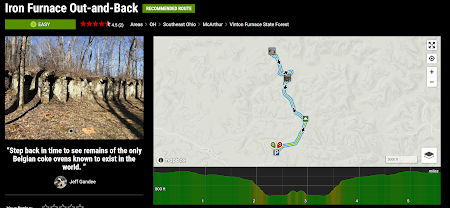
Hocking Hills too!Hocking Hills park is so close, you'll need to reserve time to walk part of its many curated pathways. Old Man's Cave, the Rock House, and Cedar Falls are favorites of ours.







